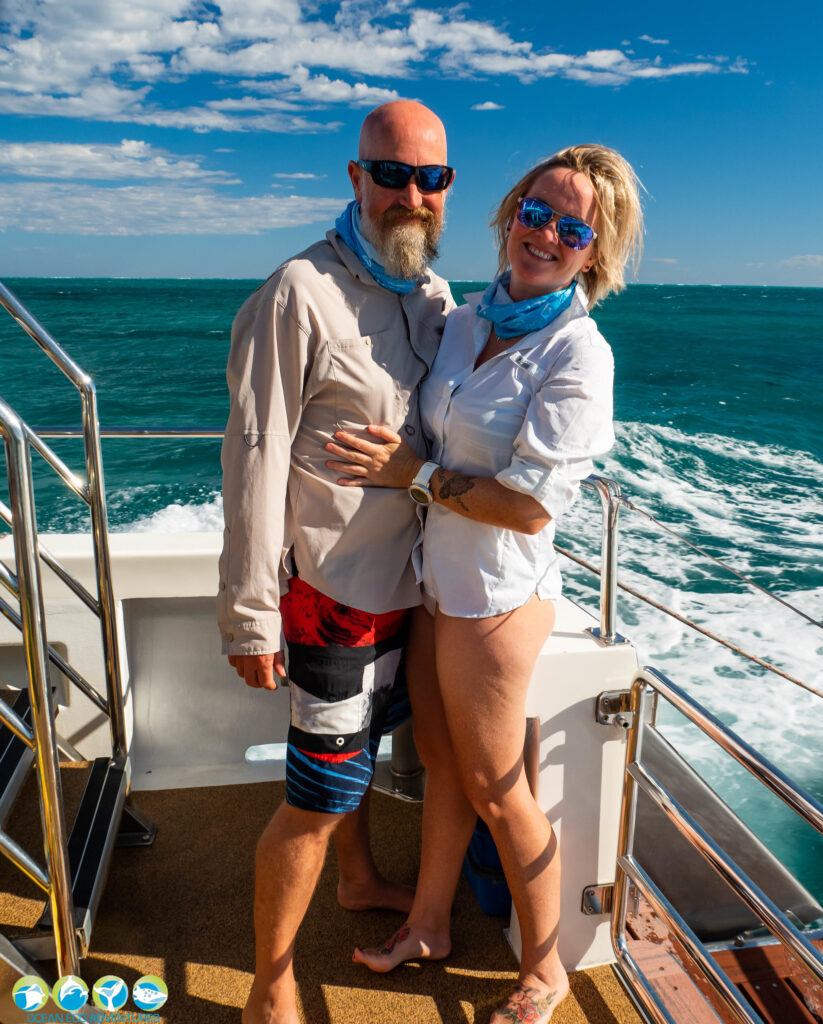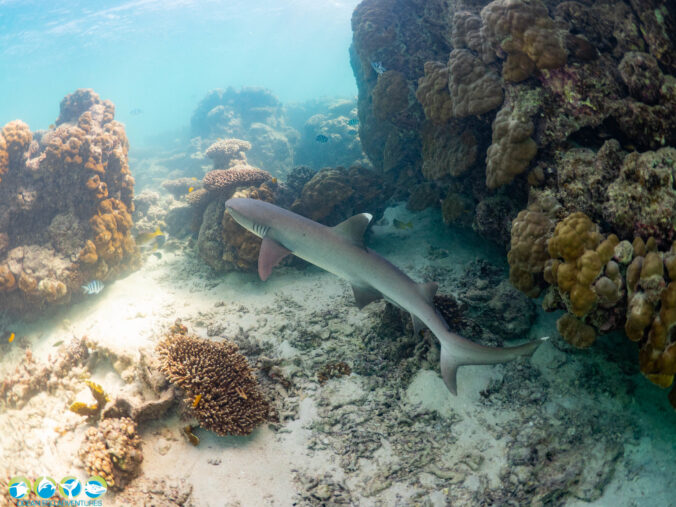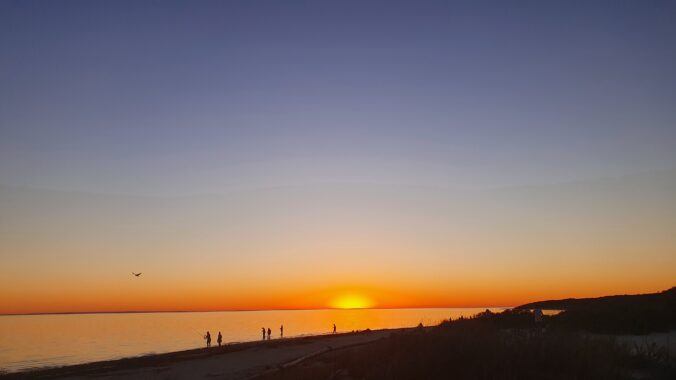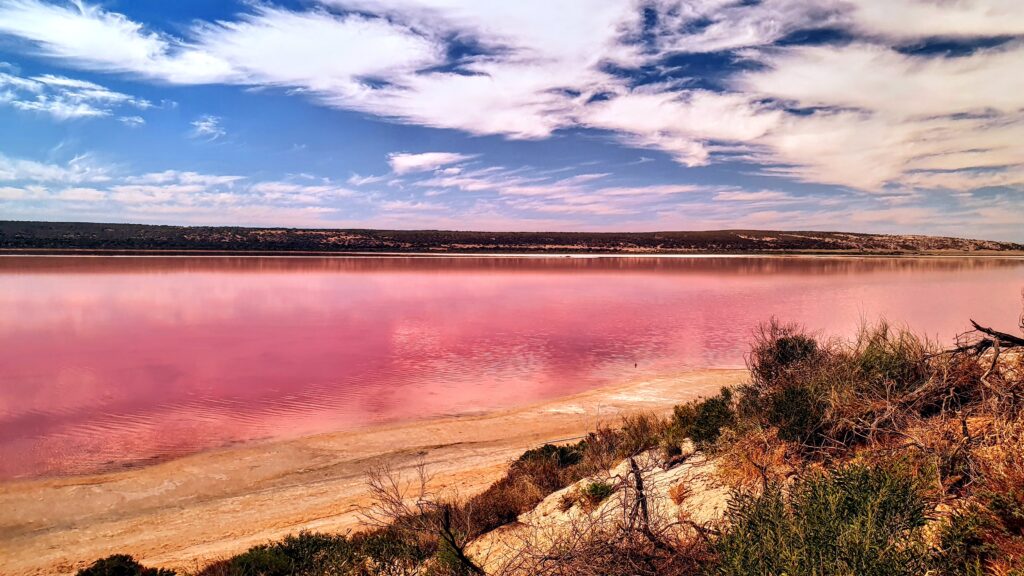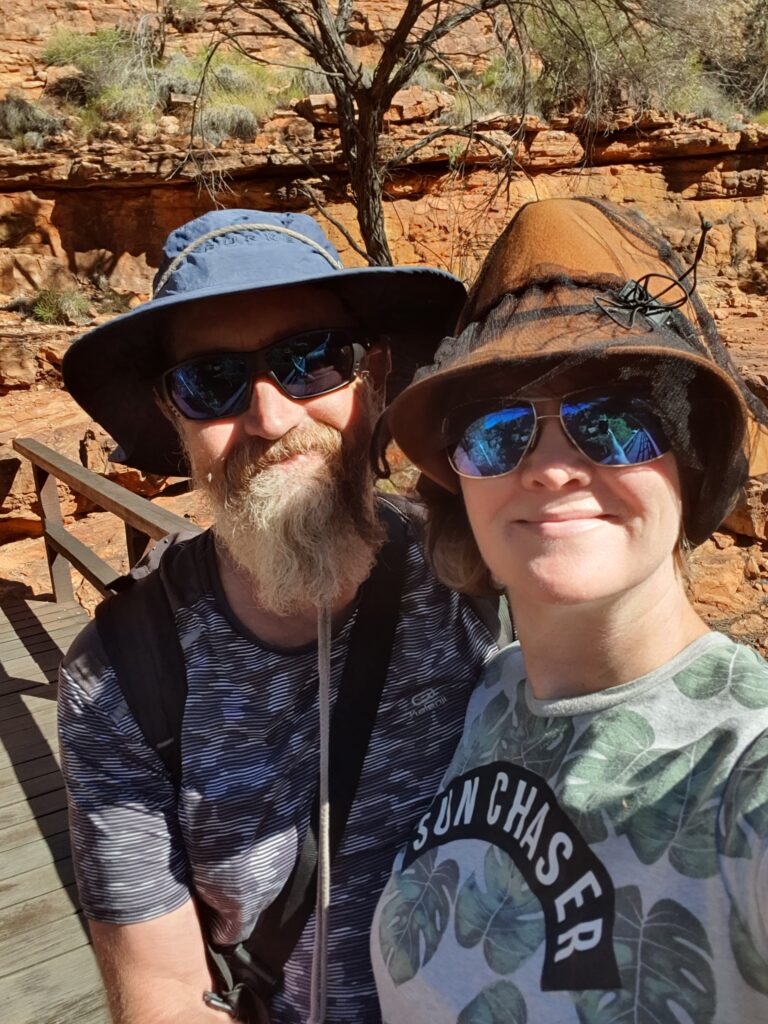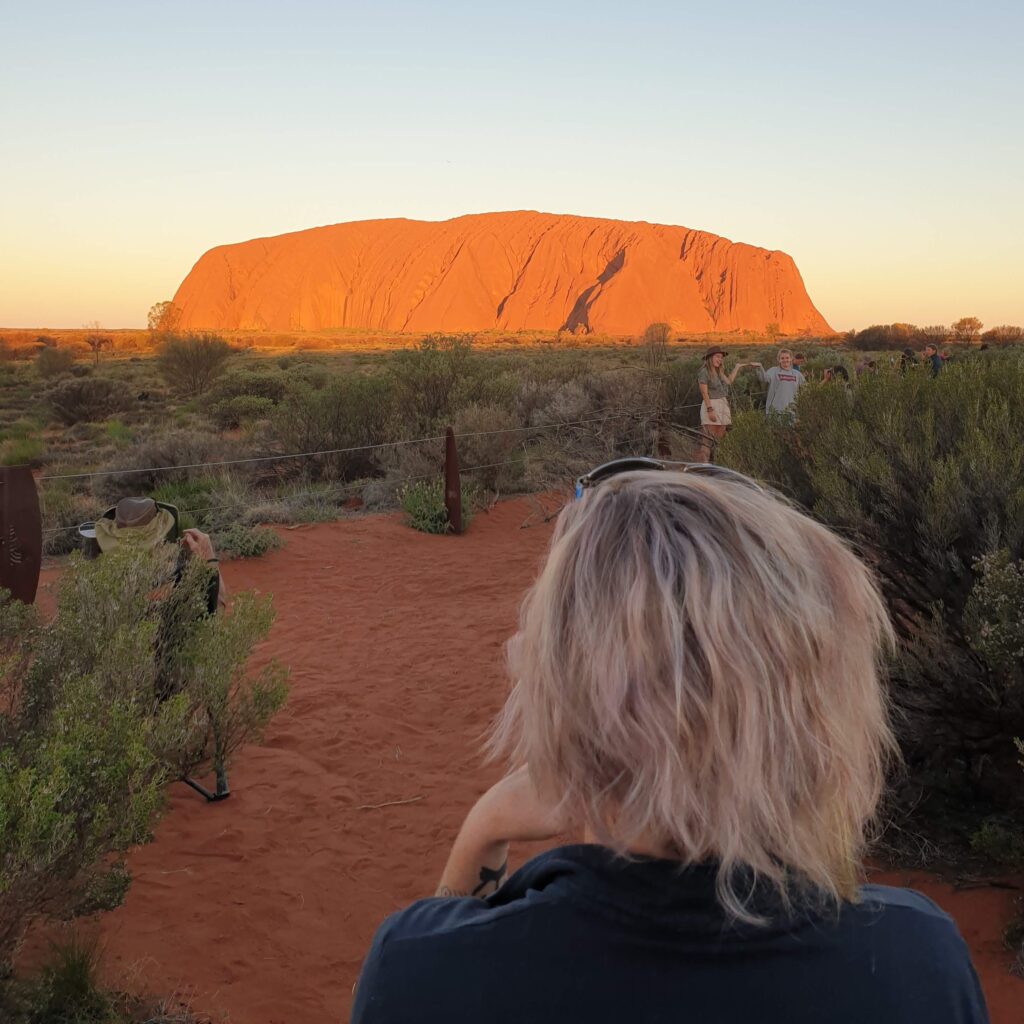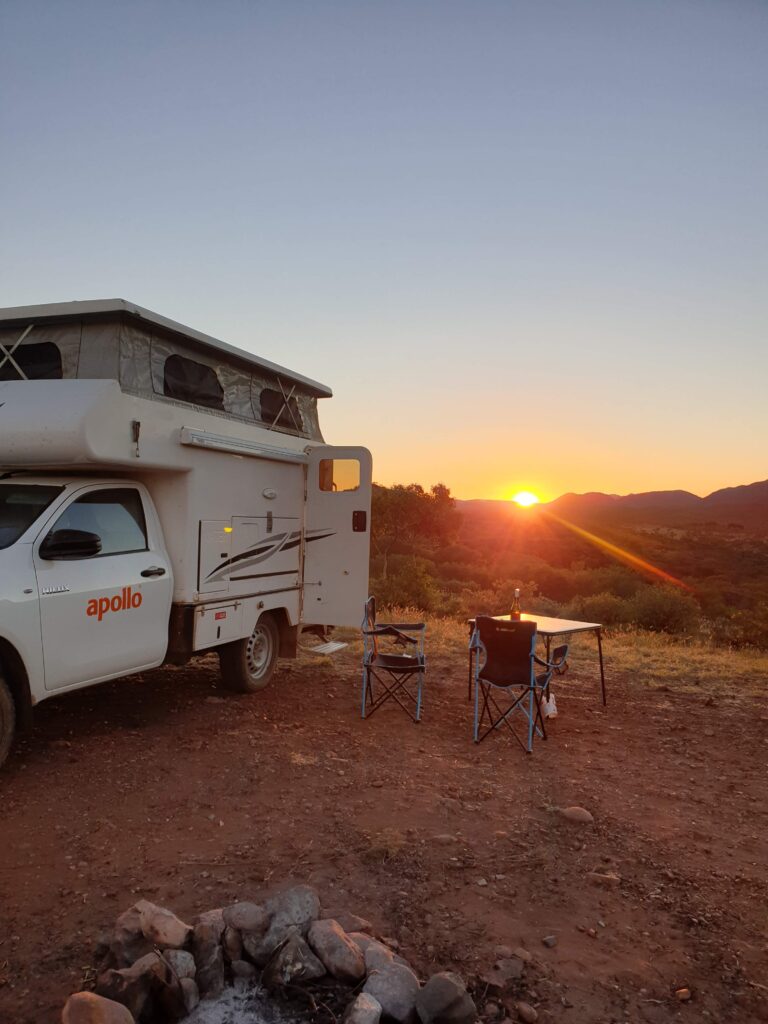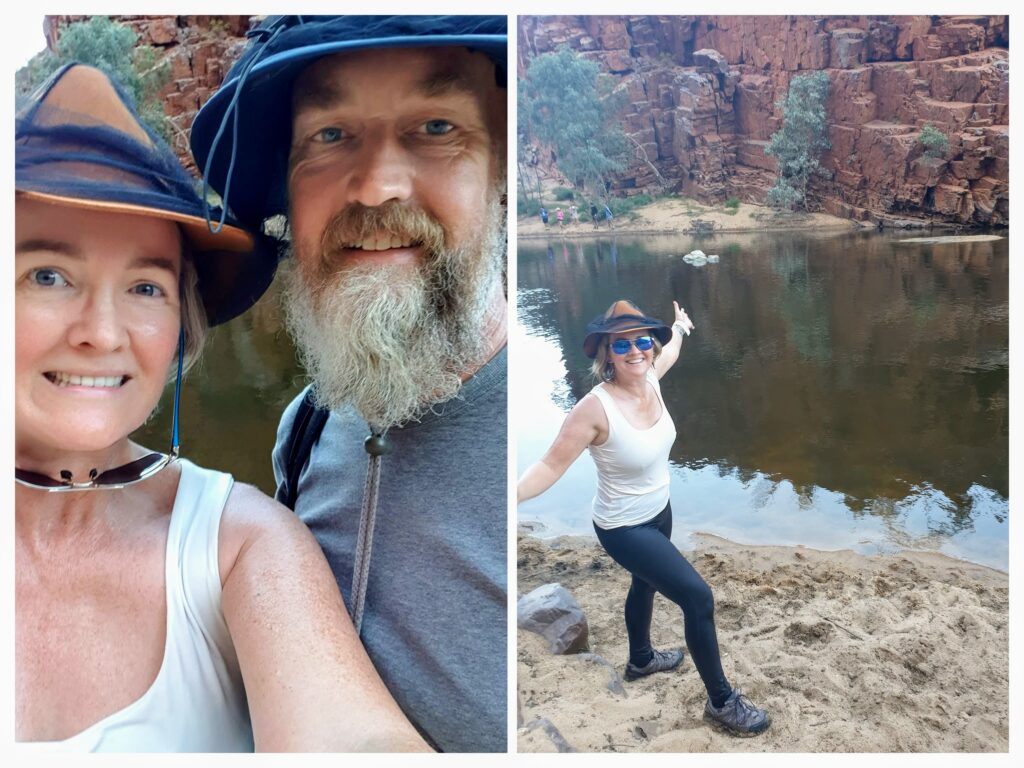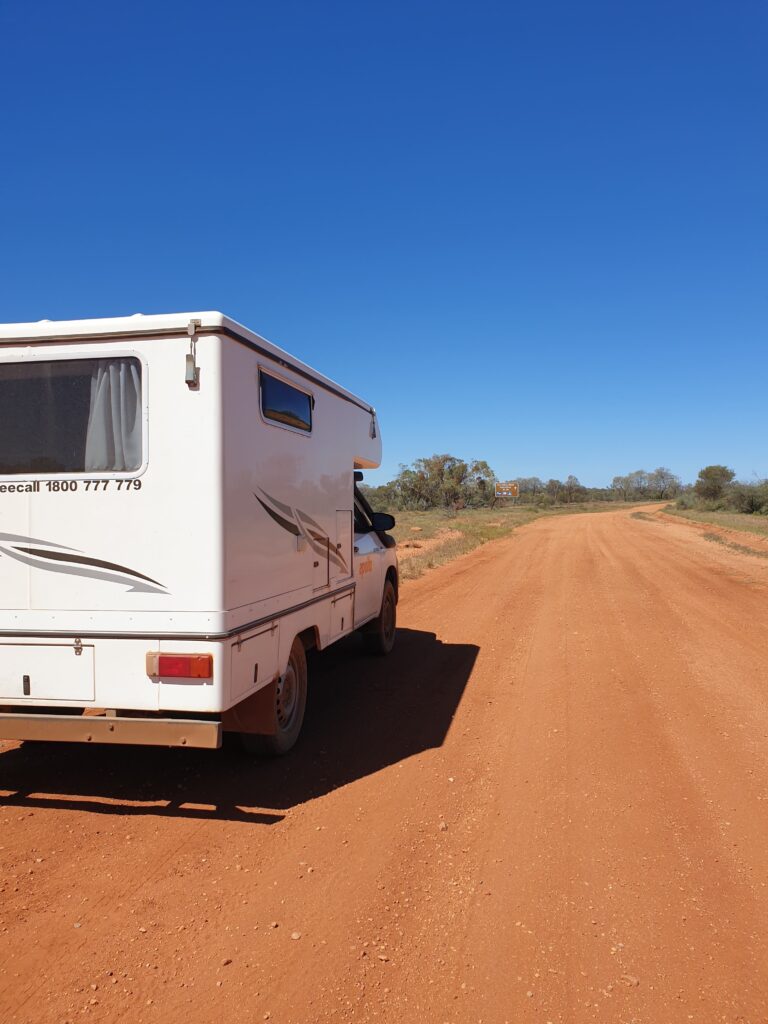By Fi & Adrian


The main stop on the way north from Denham was at Carnarvon where we followed a sign promising preserves, farm produce and the best mango ice cream. We weren’t disappointed and stocked up on everything from dried mangoes to sauerkraut. In this photo Adrian is still really happy with the purchase clearly. Carnarvon is also the start of the 300km Ningaloo reef.
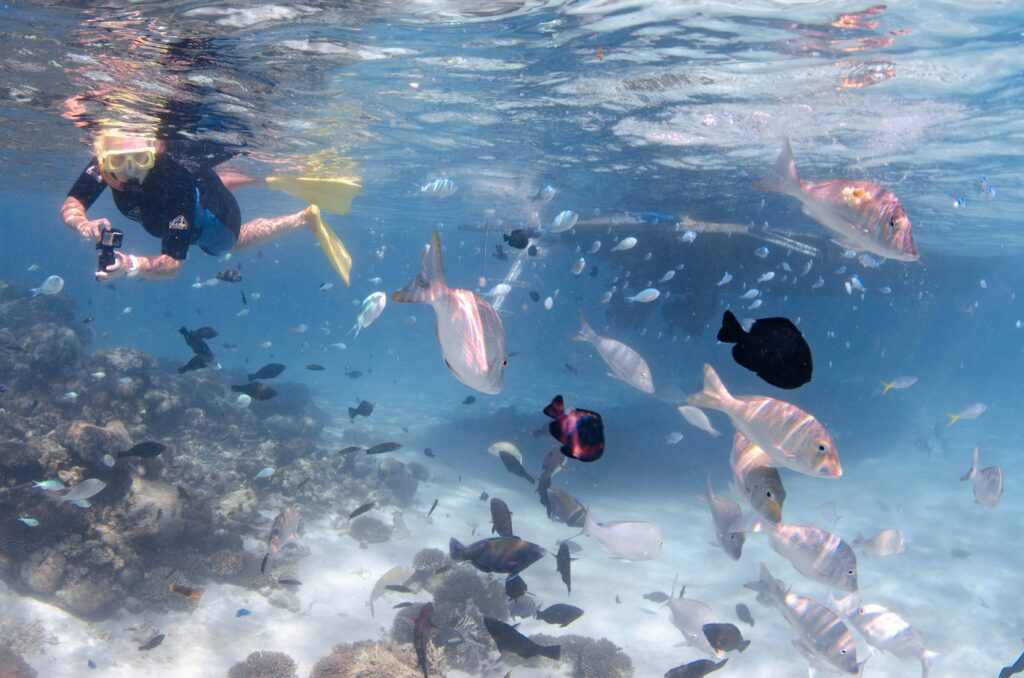
After sleepy Denham, in Coral Bay we were met by a mass of humanity with the large caravan parks filled to overflowing. We had a quick dinner and prepared for our Manta Ray experience starting early the next day.

It turned out we chose a good tour as the boat was not full, the owner was a marine researcher and his team couldn’t have been more helpful. We performed the warm up snorkel (mostly to identify the ‘drowners’) and went searching for manta rays. After locating a ‘fast’ manta we got in the water and watched her ‘flying’ up and down collecting food.

With the manta ticked off we went searching along the reef. Suddenly there was lots of excitement as splashing led us to a group of sharks eating a turtle. We didn’t enter the water but watched through our masks lying on the back of the boat until a very large tiger shark checked us out. The large tiger took the remains of the turtle and headed off towards the reef. It was described as a happy dog with a bone looking for a quiet place to munch.

After a couple of snorkels on the reef another tiger shark was spotted and we were all herded into the water for quick encounter. Apparently they usually move on quickly when a group of tourists arrive so we needed to swim quickly. I (Adrian) had a moment of concern when I realised I was closest to it and it wasn’t moving away.

The next day we headed north to Exmouth and had a quick windscreen change before settling into the caravan park. All that bumping around on dirt tracks had big cracks walking across the windscreen!

We were back in the water the next day to chat to the whale sharks. A similar process to swimming with the manta rays, we were going to be told to enter the water quickly from the back of the boat, line up and wait for the shark to come past then start swimming.

“Go” came the command, and we were in and looking to the direction indicated. by our guide. Hours seemed to pass staring into the blue, but soon enough, a dark shadow appeared, then the shadow gained form, and out of the blueness, this giant fish cruised past, munching away happily on its krill, seeing us merely as flies.

These guys were much slower than the mantas and easier to swim with. We were able to let it pass, admiring its majesty, then swim quickly around behind it around to the other side where we could have an amazing uninterrupted view of this gentle giant.
A cracked rib (not ours) shortened our trip but we went out for a bonus snorkel on the reef to finish the day off and got to hang out with this guy.

On our last day at Exmouth we rented some paddle boards and explored the Cape Range coastal area. First stop was Turquoise Bay for a paddle around on our boards in the perfect little bay. It was quite busy so after some good body movement, we headed south along the parks coast to Sandy Beach for a swim and practiced some handstands because, why not.

Finally, we took off to the very southern part of the road in the park and paddleboarded Yardie Creek. Paddling down the creek, it wasn’t long before we felt numerous eyes on us… Looking up we clocked the local protected wildlife, the black footed rock wallabies staring at us from their perches on the creeks sheer cliff walls. A stunning little creek, it didn’t take us long to head up to the end and back, so we had time for extra swimming at Sandy Bay.

Sunset at the lighthouse is mandatory and didn’t disappoint.
Enough coast for a while. Its back to the hills…
